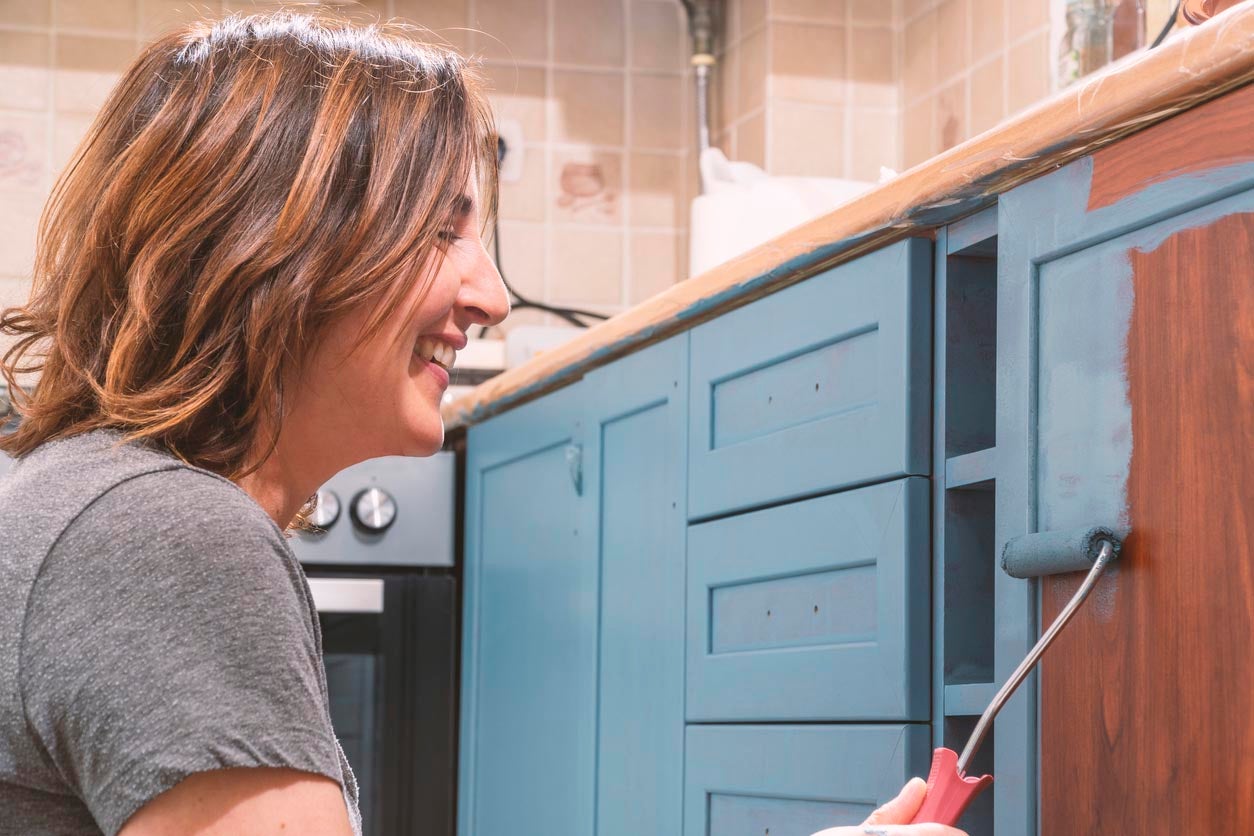Painting your kitchen cabinets can be a great way to give your kitchen a new look without having to replace all of the cabinet doors and hardware.
However, it’s important to take your time and do it right the first time, so you don’t end up regretting it.
Before you begin painting, it’s important to properly prepare the cabinets and walls. That way, you’ll have a smooth surface to paint on.
If the cabinets are in bad shape or have been previously painted, sand them first to get rid of any rough spots. This is particularly necessary if the surface is rough from previous finishes or poor varnishing jobs.
Next, clean the cabinets with TSP substitute and vacuum them to remove any dirt or dust. Then, use a paint brush to apply a stain-blocking, oil-base bonding primer. Let them dry according to the manufacturer’s directions.
After the cabinets have been primed, sand them lightly with 120-grit sandpaper. This will make the cabinet’s surface more smooth and give it better adhesion.
Alternatively, you can sand them with a fine-grit sandpaper like 80 grit, which leaves fewer sanding marks and is more gentle. If you have a large surface area to paint or if the cabinet is very old or stained, it may be better to skip the sanding and use a stain-blocking primer.
When it comes time to paint, choose a quality paint with a hard finish so that it can stand up to regular use and cleaning in the future. This will also protect the cabinets from scratches and make them last longer.
You can spray or roll the paint onto the woodwork, though it may be easier to brush it on if the area is small or tough. Select the applicator that works best for you and your style of work.
Before painting your kitchen cabinets, be sure to label all doors and drawers for easy reassembly later. This will save you a lot of time and frustration.
Primer is a key part of the painting process, as it helps to ensure that the final coat of paint will stick well. This is especially important when painting slick surfaces like aluminum or vinyl. Without proper adhesion, you can experience flaking, cracking, or blistering of the paint.
There are many different primers available on the market, and it’s important to pick one that’s right for your needs. This can include things such as the type of surface you’re working with, the finish you want to achieve, and if you’re interested in using a low-VOC product.
Oil-based primers are a good choice because they offer great durability, block stains and tannin bleed, and are easy to apply. They also come in a variety of finishes, including flat, matte, and smooth.
The molecules in oil-based primers are 20 times smaller than those in water-based primers, which allows them to penetrate deeply into the ridges and crevices of your surface. This makes them a great choice for laminate cabinets and oak cabinets, as it helps to fill in the grain and prevent chipping.
In addition to their durability, oil-based primers are also known for their odor- and stain-blocking capabilities. This is especially important if you’re looking to avoid unpleasant smells during your project.
For a more affordable option, Zinsser B-I-N is a synthetic shellac primer that’s low in VOCs and can be used on a wide variety of surfaces, including wood and plastic. It also dries quickly and will accept both water- and oil-based topcoats.
Another good choice is the KILZ 3 Premium, which is a premium-quality primer that will give you great adhesion and coverage. It will also work on a variety of surfaces, from rough wood to glossy laminate.
Before painting, sand your cabinets to prepare them for primer. It’s a light sanding that will help the primer stick to the surface. You don’t need to sand bare wood, but you do need to sand the surfaces that will be painted.
If you have oak or another type of wood with open pores in the grain, sanding helps fill the pores so that the new paint won’t have any trouble sticking to it. It’s also necessary to sand if you want to remove any scratches from the original paint.
